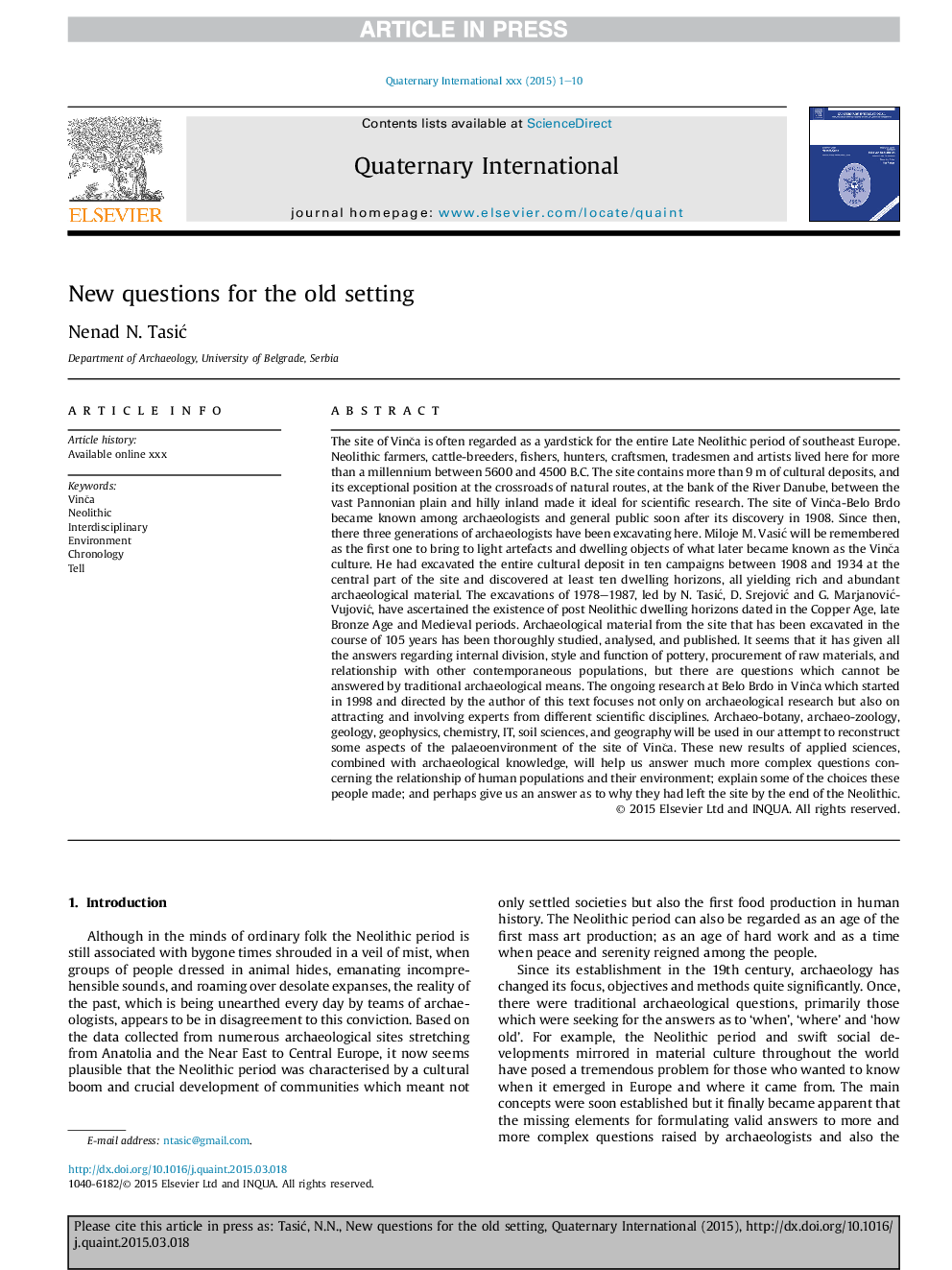| کد مقاله | کد نشریه | سال انتشار | مقاله انگلیسی | نسخه تمام متن |
|---|---|---|---|---|
| 5113805 | 1377952 | 2017 | 10 صفحه PDF | دانلود رایگان |
عنوان انگلیسی مقاله ISI
New questions for the old setting
ترجمه فارسی عنوان
سوالات جدید برای تنظیمات قدیمی
دانلود مقاله + سفارش ترجمه
دانلود مقاله ISI انگلیسی
رایگان برای ایرانیان
کلمات کلیدی
موضوعات مرتبط
مهندسی و علوم پایه
علوم زمین و سیارات
زمین شناسی
چکیده انگلیسی
The site of VinÄa is often regarded as a yardstick for the entire Late Neolithic period of southeast Europe. Neolithic farmers, cattle-breeders, fishers, hunters, craftsmen, tradesmen and artists lived here for more than a millennium between 5600 and 4500 B.C. The site contains more than 9Â m of cultural deposits, and its exceptional position at the crossroads of natural routes, at the bank of the River Danube, between the vast Pannonian plain and hilly inland made it ideal for scientific research. The site of VinÄa-Belo Brdo became known among archaeologists and general public soon after its discovery in 1908. Since then, there three generations of archaeologists have been excavating here. Miloje M. VasiÄ will be remembered as the first one to bring to light artefacts and dwelling objects of what later became known as the VinÄa culture. He had excavated the entire cultural deposit in ten campaigns between 1908 and 1934Â at the central part of the site and discovered at least ten dwelling horizons, all yielding rich and abundant archaeological material. The excavations of 1978-1987, led by N. TasiÄ, D. SrejoviÄ and G. MarjanoviÄ-VujoviÄ, have ascertained the existence of post Neolithic dwelling horizons dated in the Copper Age, late Bronze Age and Medieval periods. Archaeological material from the site that has been excavated in the course of 105 years has been thoroughly studied, analysed, and published. It seems that it has given all the answers regarding internal division, style and function of pottery, procurement of raw materials, and relationship with other contemporaneous populations, but there are questions which cannot be answered by traditional archaeological means. The ongoing research at Belo Brdo in VinÄa which started in 1998 and directed by the author of this text focuses not only on archaeological research but also on attracting and involving experts from different scientific disciplines. Archaeo-botany, archaeo-zoology, geology, geophysics, chemistry, IT, soil sciences, and geography will be used in our attempt to reconstruct some aspects of the palaeoenvironment of the site of VinÄa. These new results of applied sciences, combined with archaeological knowledge, will help us answer much more complex questions concerning the relationship of human populations and their environment; explain some of the choices these people made; and perhaps give us an answer as to why they had left the site by the end of the Neolithic.
ناشر
Database: Elsevier - ScienceDirect (ساینس دایرکت)
Journal: Quaternary International - Volume 429, Part A, 30 January 2017, Pages 3-12
Journal: Quaternary International - Volume 429, Part A, 30 January 2017, Pages 3-12
نویسندگان
Nenad N. TasiÄ,
